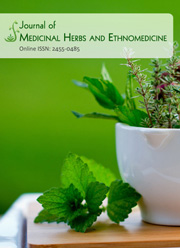Determination of antibacterial activity in rhizome of plant Aechmea magdalenae (andre) andre ex baker
DOI:
https://doi.org/10.25081/jmhe.2017.v3.3297Abstract
The rising resistance of microbes toward the present-day antibiotics has led the researchers to increasingly
investigate medicinal plant-based antibiotics. The plant Aechmea magdalenae (Andre) Andre ex Baker
(Bromeliaceae) is a terrestrial bromeliad native to Central America and Northwestern South America. Throughout
much of its range, the juice from the leaves of A. magdalenae has been used by locals as caustic for wounds. In
the lowland wet forests of Costa Rica, however, the local herbal healers do not rely on this species. In this study,
antibacterial and biochemical analyses were conducted on A. magdalenae to document its potential use as a
medicinal plant for both the local people in Costa Rica and to the scientific community. Gas chromatography-mass
spectrometry profiling studies also revealed, acetic acid to be one of the important chemical compound present in
high probability in A. magdalenae. The antibacterial activity was confirmed by performing agar disc diffusion assay
using various concentrations of acetic acid against bacteria Escherichia coli. Acetic acid clearly demonstrated
its antibacterial effect against E. coli. The antibacterial activity of the methanolic extracts of A. magdalenae was
tested against Gram-negative (E. coli) and Gram-positive bacteria (Staphylococcus aureus). The methods used
to determine the antibacterial activity of the plant extracts were agar well diffusion assay and 96-well plate
assay. In both the assays, gentamicin was used as a positive control and 20% dimethyl sulfoxide was used as
a negative control. In 96 well plate assay, resazurin was used as an indicator to evaluate qualitatively whether
the bacteria there was the growth of the bacteria or no growth. All the tests were performed in triplicates. The
zones of inhibition recorded were higher for S. aureus (10.5 mm) as compared to E. coli (9.5 mm). The minimum
inhibitory concentration for E. coli was higher as compared to S. aureus.



 .
. 